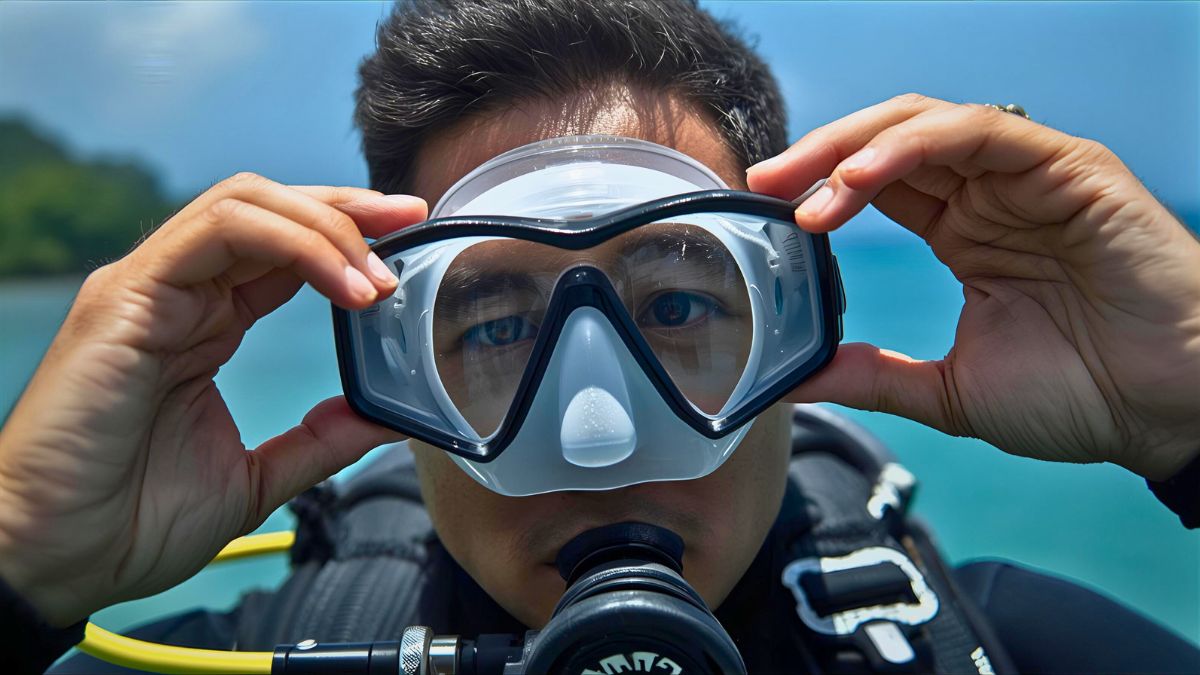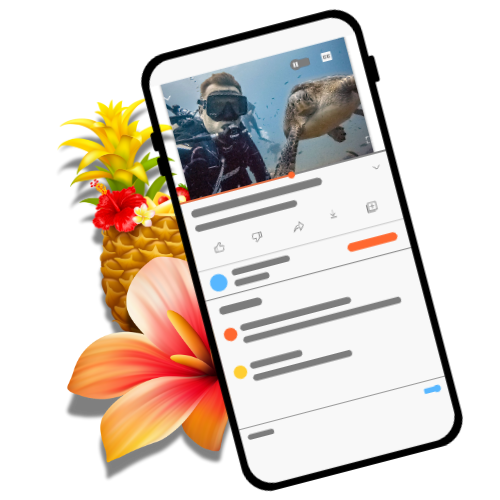Have you ever wondered what it feels like to breathe underwater and explore a world that most people only see in documentaries? Scuba diving opens the door to this incredible experience, allowing you to discover vibrant coral reefs, and explore underwater landscapes that few get to witness firsthand.
In this comprehensive guide, I’ll answer the fundamental question: what is scuba diving? You’ll learn about its rich history, discover the different methods and types of diving, and understand the basic equipment that makes underwater breathing possible.
What is Scuba Diving? Definition and Overview
Scuba diving is an underwater activity where divers use specialized breathing equipment to explore beneath the water’s surface for extended periods. The term “SCUBA” is actually an acronym that stands for Self-Contained Underwater Breathing Apparatus.
How Does Scuba Diving Differ from Other Water Activities?
Unlike snorkeling, where you float at the surface breathing through a tube, or freediving, where you hold your breath during descents, scuba diving uses compressed air stored in tanks. This technology enables divers to stay submerged for 30 minutes to over an hour, depending on depth and air consumption.
Did you know? The word SCUBA was coined in 1952 by Major Christian J. Lambertsen, though Jacques Cousteau and Émile Gagnan developed the first successful open-circuit scuba system in 1943, calling it the “Aqua-Lung.”
Why Do People Choose Scuba Diving?
People scuba dive for many reasons. Some seek recreation and relaxation, enjoying the weightless sensation and peaceful underwater environment. Others pursue it professionally, working as dive instructors, underwater photographers, marine biologists, or commercial divers.
Is Scuba Diving Accessible to Everyone?
With proper training and certification, almost anyone in reasonable health can learn to dive safely. Today, millions of people worldwide hold scuba diving certifications, making it one of the most popular adventure activities globally. Children as young as 10 can begin learning, while older adults continue diving well into their 70s and 80s.
What is the History of Scuba Diving?
Understanding where scuba diving came from helps us appreciate the remarkable technology we use today.

When Did Scuba Diving Start?
Humans have been diving underwater since ancient times, primarily for food collection, salvage operations, and military purposes. Archaeological evidence shows that people were diving for pearls and sponges as far back as 4500 BCE in ancient Mesopotamia and Greece.
What Did Ancient Divers Do Underwater?
These early divers relied entirely on their ability to hold their breath. The earliest recorded descriptions of diving equipment date back to the 1st century BC. A bas-relief from 885 BC depicts an armed man breathing underwater using equipment resembling modern diving cylinders.
Ancient divers used hollow reeds as breathing tubes, with one end in the mouth and the other extending above water. This primitive snorkel allowed divers to breathe while submerged just below the surface.
How Did Scuba Diving Equipment Evolve?
What Was Leonardo da Vinci’s Contribution?
Leonardo da Vinci is credited with designing the first self-contained underwater breathing system and diving suit concepts in the late 15th century. Though never built during his lifetime, his sketches showed remarkable foresight.
Did you know? Augustus Siebe’s diving suit design remained the standard for commercial diving operations for over 100 years, well into the 20th century.
Who Created the First Working Diving System?
The breakthrough came in 1797 when German inventor Karl Heinrich Klingert designed the first diving system that allowed free underwater mobility. His apparatus consisted of a large metal helmet connected to an air reservoir.
Why is Augustus Siebe Called the Father of Diving?
Augustus Siebe is often called the “father of diving” because of his 1837 patent for a complete, enclosed diving suit. This revolutionary design featured gas-tight fabric, heavy boots, adjustable weights, and air supply delivered by a rotary pump from the surface. For the first time, divers could stay underwater safely for extended periods.
When Was Modern Scuba Equipment Invented?
The most significant advancement came in 1943 when Jacques-Yves Cousteau and Émile Gagnan invented the Aqua-Lung. This was the first truly successful self-contained underwater breathing apparatus. Their demand regulator automatically delivered air at the correct pressure based on depth, making recreational scuba diving practical and safe.
How Did Scuba Diving Become Popular?
The popularization occurred in two major waves. The first came in the 1950s and 1960s, driven largely by Cousteau’s films that brought the underwater world into people’s homes.
The second wave began in the 1970s, fueled by safer technology, affordable equipment, and standardized training organizations like PADI, SSI, NAUI, and SDI. Today, scuba diving is practiced by millions worldwide.
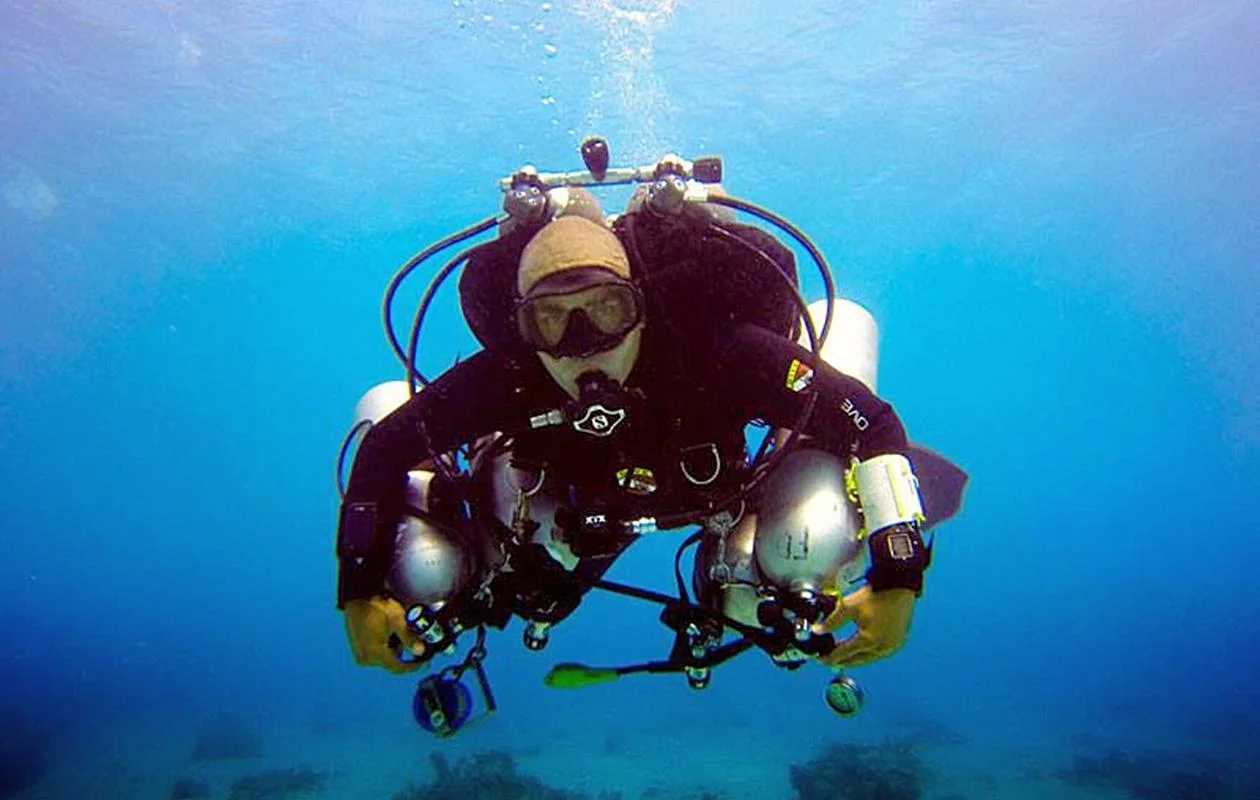
What Are the Different Methods of Diving?
Diving encompasses several distinct methods, each with its own techniques, equipment, and purposes.
What is Snorkeling?
Snorkeling is the simplest and most accessible form of underwater exploration. It involves floating or swimming at the water’s surface while observing the underwater world below.
What Equipment Do You Need for Snorkeling?
The basic equipment includes three essential items:
- Mask creates an air space in front of your eyes for clear vision
- Snorkel allows continuous breathing without lifting your head
- Fins increase mobility and swimming efficiency
Snorkeling requires no certification and minimal training, making it perfect for families and beginners. Popular destinations include Malta’s Gozo, Sardinia’s Isola Rossa, Cyprus, Croatia’s Makarska Riviera, and Greek islands.
Did you know? Herbert Nitsch holds the world record for the deepest freedive at 214 meters (702 feet), achieved in 2007. The dive took just over 4 minutes to complete.
What is Freediving?
Freediving, also called breath-hold diving, involves taking a deep breath and swimming down to explore underwater environments for as long as you can safely hold your breath.
How Long Can Freedivers Stay Underwater?
Beginners might stay underwater for 30 seconds to one minute. Trained freedivers can hold their breath for several minutes and reach impressive depths. The current world record exceeds 200 meters.
Proper preparation is essential, including breathing exercises, equalization techniques, and understanding safe ascent procedures. Freedivers use masks, wetsuits, fins, and sometimes ballast weights, but no air tanks.
What is Scuba Diving with Equipment?
Scuba diving with an aqualung represents the most advanced method of underwater exploration, allowing continuous underwater breathing for 30 minutes to over an hour.
What is the Basic Scuba Equipment?
Essential components include:
- ABC equipment (mask, snorkel, fins)
- Breathing regulator and compressed air cylinder
- Wetsuit or dry suit for thermal protection
- Buoyancy Control Device (BCD)
- Optional: dive computer, diving light
The regulator reduces high-pressure tank air to ambient pressure, allowing normal breathing underwater. Modern regulators automatically adjust air delivery based on depth and breathing rate.
What Are the Main Types of Scuba Diving?
Scuba diving encompasses many different styles, from casual recreation to highly technical operations.
What is Recreational Scuba Diving?
Recreational diving is suitable for beginners through advanced divers. Unlike casual snorkeling, it requires proper training and certification. The purpose is primarily relaxation, stress relief, and enjoyment of the underwater environment.

The generally accepted depth limit for recreational diving is 40 meters (130 feet), providing a safety margin while allowing access to diverse underwater environments.
What is Sport Diving?
Sport diving involves regular, consistent practice rather than occasional vacation diving. Sport divers treat diving as athletic activity, working to improve fitness, technique, air consumption, and buoyancy control.
What is Technical Diving?
Technical diving is reserved for experienced divers with extensive knowledge and specialized equipment. It exceeds recreational limits regarding depth (beyond 40 meters) or time underwater.
What Makes Technical Diving Different?
Technical divers carry multiple tanks with different gas mixtures, redundant systems, and specialized computers. Dives involve decompression stops and extended bottom times requiring careful planning.
The goal is continuous skill improvement and exploration of environments recreational divers cannot access. Training comes from specialized organizations like TDI, IANTD, or PADI/DSAT.
Did you know? The deepest scuba dive ever recorded was 332.35 meters (1,090 feet) by Egyptian diver Ahmed Gabr in 2014. The dive took 12 minutes to descend but required over 14 hours of decompression stops.
What Are Specialty Diving Types?
What is Wreck Diving?
Wreck diving focuses on exploring sunken ships and aircraft. It attracts history enthusiasts who want to explore maritime artifacts firsthand. Wreck penetration requires specific training for navigating confined spaces with limited visibility. Famous sites include the SS Thistlegorm in Egypt and the USAT Liberty in Bali.
What is Cave Diving?
Cave diving involves exploring underwater caves and passages. The defining characteristic is inability to make direct ascent to the surface. This requires extensive training, exceptional fitness, and strong mental composure. Despite risks, cave diving reveals stunning formations like stalactites and unique ecosystems.
What is Professional Diving?
Professional diving refers to any paid diving work. Professional divers need official qualifications:
- Class III: diving to 20 meters
- Class II: diving to 50 meters
- Class I: deep-sea diving beyond 50 meters
Professional divers include instructors, scientific researchers, rescue divers, police divers, and engineering divers maintaining underwater infrastructure.
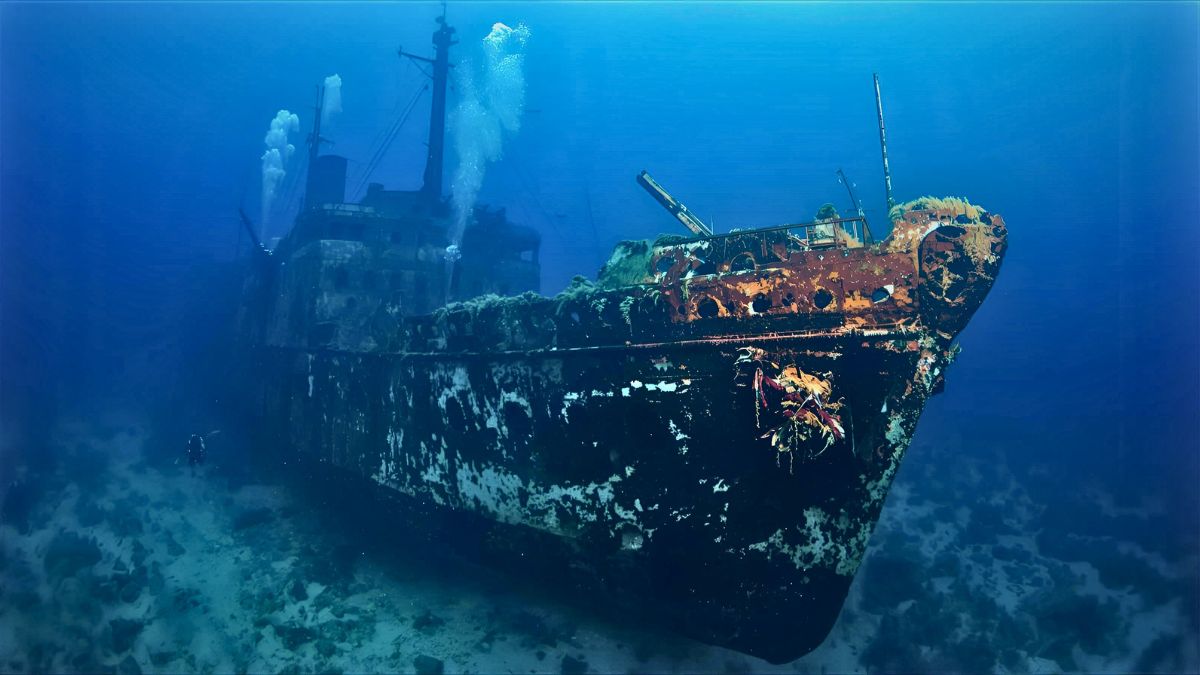
What Equipment Do You Need for Scuba Diving?
Understanding equipment is essential before beginning your diving journey.
Why Do You Need a Diving Mask?
The scuba mask creates an air space allowing clear underwater vision. Without it, water contacts your eyes directly, making everything blurry.
How Do Fins Improve Your Diving?
Fins dramatically increase swimming efficiency, transforming your legs into powerful propulsion tools. Proper fin technique conserves energy and reduces air consumption.
What Does a Regulator Do?
The scuba regulator converts high-pressure tank air into breathable air at ambient pressure. Modern regulators automatically adjust based on depth and breathing rate.
How Much Air Does a Scuba Tank Hold?
Standard tanks provide 30 to 60 minutes underwater, depending on depth, breathing rate, and exertion level. Deeper dives consume air faster due to increased pressure.
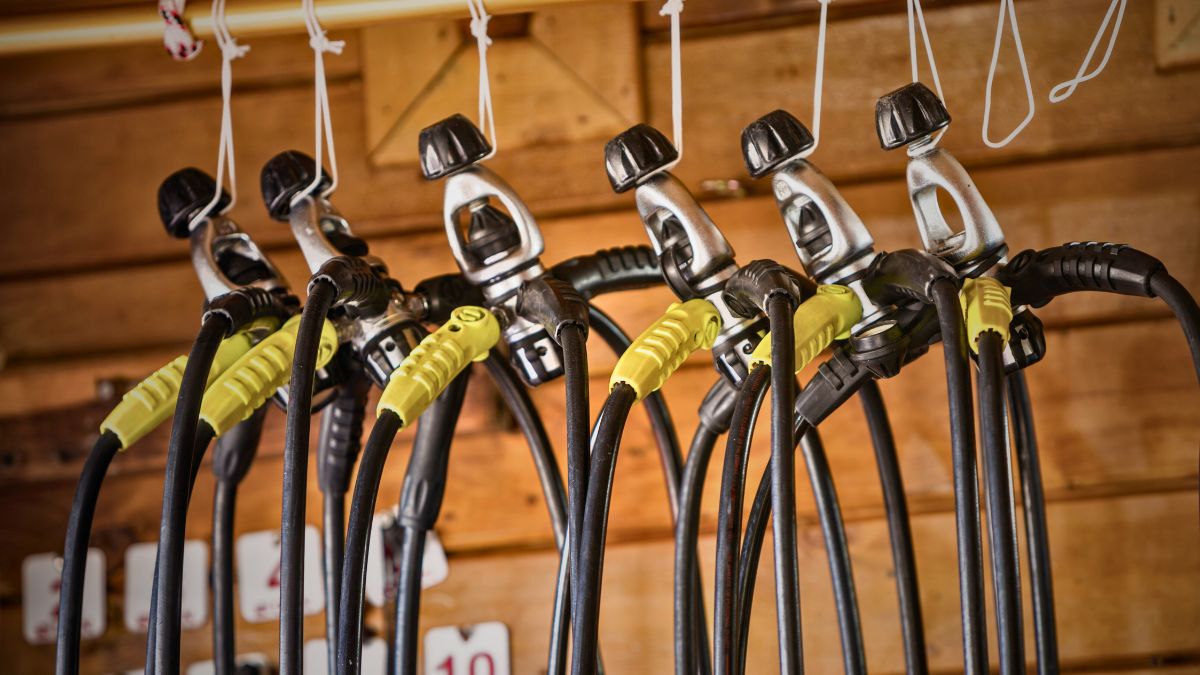
What is a Buoyancy Control Device?
A BCD is a vest-like garment allowing buoyancy adjustment underwater. Adding air makes you rise; releasing air makes you sink. Proper buoyancy control protects marine ecosystems, conserves energy, and marks experienced divers.
What Protection Do Divers Wear?
Wetsuits trap a thin water layer against your skin, which body heat warms for insulation. They range from 3mm for warm water to 7mm for cold water. Dry suits keep you completely dry and are preferred below 15°C (60°F).
Why Should You Use a Dive Computer?
Dive computers display depth, time, no-decompression limits, and ascent rate. They track multiple dives and calculate safe profiles automatically, significantly enhancing safety.
When Do You Need a Diving Light?
Diving lights are essential for night dives and useful below 10 meters. Water absorbs colors progressively, making everything appear blue or green. Lights reveal true colors and nocturnal creatures.

Ready to Dive Deeper into Scuba Diving?
You’ve learned about scuba diving’s fascinating history, from ancient breath-hold techniques to modern innovations. You understand the differences between snorkeling, freediving, and scuba diving, plus the various types from recreational to technical, wreck, cave, and professional diving.
What Makes Scuba Diving Special?
Scuba diving is accessible to millions worldwide with proper training. The underwater world offers experiences found nowhere else on Earth: weightlessness, colorful marine life, mysterious shipwrecks, and peaceful silence beneath the waves.
Where Do You Go from Here?
This guide is Part 1 of our complete scuba diving series. In upcoming parts, we’ll explore certification processes, equipment selection, essential diving skills, and the world’s best diving destinations.
Whether you’re dreaming of coral reefs, encountering sea turtles, underwater photography, or technical diving challenges, your adventure begins with proper education and training.
Ready to continue learning? Stay tuned for Part 2 of our Complete Scuba Diving Guide, where we’ll walk you through the certification process and show you exactly how to become a certified diver.
Sources and References
The information in this guide is based on historical records, diving safety standards, and established diving practices. For further reading and verification:
- Professional Association of Diving Instructors (PADI) – Official diving standards and training information
- Divers Alert Network (DAN) – Diving safety research and protocols
- Historical Diving Society – Comprehensive diving history and equipment evolution


